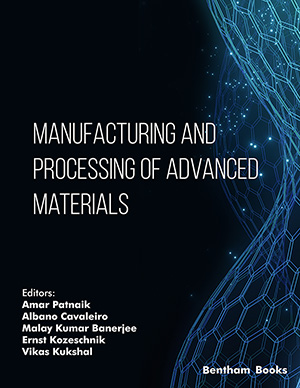Abstract
Aims: This work is to give a further insight into the residual stress distribution within APS TBC system within TBC system by coupled thermo-mechanic finite element analysis.
Background: Thermal barrier coatings are a typical example of ceramic-metal system. Thermal stress could be produced in the thermal barrier coatings on account of the difference in coefficient of thermal expansion between the ceramic and metal and poses a serious threat to the performance and lifetime of the thermal barrier coatings.
Objective: Many previous studies used out-of-plane stresses to estimate the delamination of the bond-coat/TGO and TGO/top-coat interfaces. However, in the present work, normal and tangential stresses under thermal-mechanic coupling analysis are adopted to investigate the interface delamination.
Methods: A thermo-mechanic coupled model comprised of a top-coat, thermally grown oxide, bond-coat, and substrate, is built for the stress evolution within the thermal barrier coatings using finite element method. The thermal conduction is carried out inside the thermal barrier coating model according to Fourier's law, with the temperature gradient forming in the model.
Results: The top-coat is subjected to tensile stresses around the peak, with the stress magnitudes decreasing with the oxide thickness. Normal tension acts across the oxide/bond-coat interface around the peak while normal compression acts around the valley. Their magnitudes are dependent on the oxide thickness but are not so sensitive to the substrate surface heat transfer coefficient.
Conclusion: The TC/TGO interface might be subjected to tensile or compressive stresses around the peak, which depends on the TGO thickness. The TGO/BC interface is subjected to tensile stresses around the peak and compressive stresses around the valley, the magnitudes of which increase with the TGO thickness. The influence of substrate film coefficient on the stress across the TGO/BC interface is not so significant.
Discussion: The thermo-mechanic coupled model is employed to analyze the top-coat stress, bond-coat plastic strain and interface stress. Simultaneously, a parametric study is performed on the effect of thermally grown oxide thickness and substrate surface heat transfer coefficient on the above mechanical responses.
Keywords: Thermal barrier coating, thermal conduction, residual stress, thermally grown oxide, interface morphology, Thermo-mechanic coupled analysis.
[http://dx.doi.org/10.1016/j.actamat.2009.10.010]
[http://dx.doi.org/10.1016/j.ceramint.2016.02.049]
[http://dx.doi.org/10.1146/annurev.matsci.33.011403.113718]
[http://dx.doi.org/10.1016/j.apsusc.2012.06.036]
[http://dx.doi.org/10.1007/s11666-020-01007-8]
[http://dx.doi.org/10.1007/s11666-017-0592-z]
[http://dx.doi.org/10.1177/0309324715615746]
[http://dx.doi.org/10.1016/S1359-6454(01)00283-X]
[http://dx.doi.org/10.1016/j.surfcoat.2013.12.045]
[http://dx.doi.org/10.1016/j.surfcoat.2018.12.008]
[http://dx.doi.org/10.1016/S1359-6454(00)00171-3]
[http://dx.doi.org/10.1016/j.matdes.2009.08.005]
[http://dx.doi.org/10.1016/j.surfcoat.2008.06.178]
[http://dx.doi.org/10.1016/j.surfcoat.2017.02.012]
[http://dx.doi.org/10.1016/j.ceramint.2012.06.051]
[http://dx.doi.org/10.1016/S0921-5093(02)00251-4]
[http://dx.doi.org/10.1016/j.surfcoat.2016.07.066]
[http://dx.doi.org/10.1016/j.commatsci.2012.02.044]
[http://dx.doi.org/10.1016/j.commatsci.2009.09.012]
Available from [http://dx.doi.org/10.1088/1742-6596/240/1/012067]
[http://dx.doi.org/10.1016/j.surfcoat.2012.02.019]
[http://dx.doi.org/10.1016/j.surfcoat.2010.08.099]
[http://dx.doi.org/10.1016/j.mtcomm.2021.102790]
[http://dx.doi.org/10.1016/j.surfcoat.2013.02.005]
[http://dx.doi.org/10.1016/j.matdes.2010.07.034]
[http://dx.doi.org/10.1016/S0921-5093(01)01859-7]
[http://dx.doi.org/10.1016/j.actamat.2005.06.003]
[http://dx.doi.org/10.1016/j.actamat.2004.06.046]
[http://dx.doi.org/10.1016/S0040-6090(03)00427-9]
[http://dx.doi.org/10.1016/j.matdes.2011.05.039]
[http://dx.doi.org/10.1016/j.msea.2005.08.208]
[http://dx.doi.org/10.1016/j.actamat.2004.10.005]

























